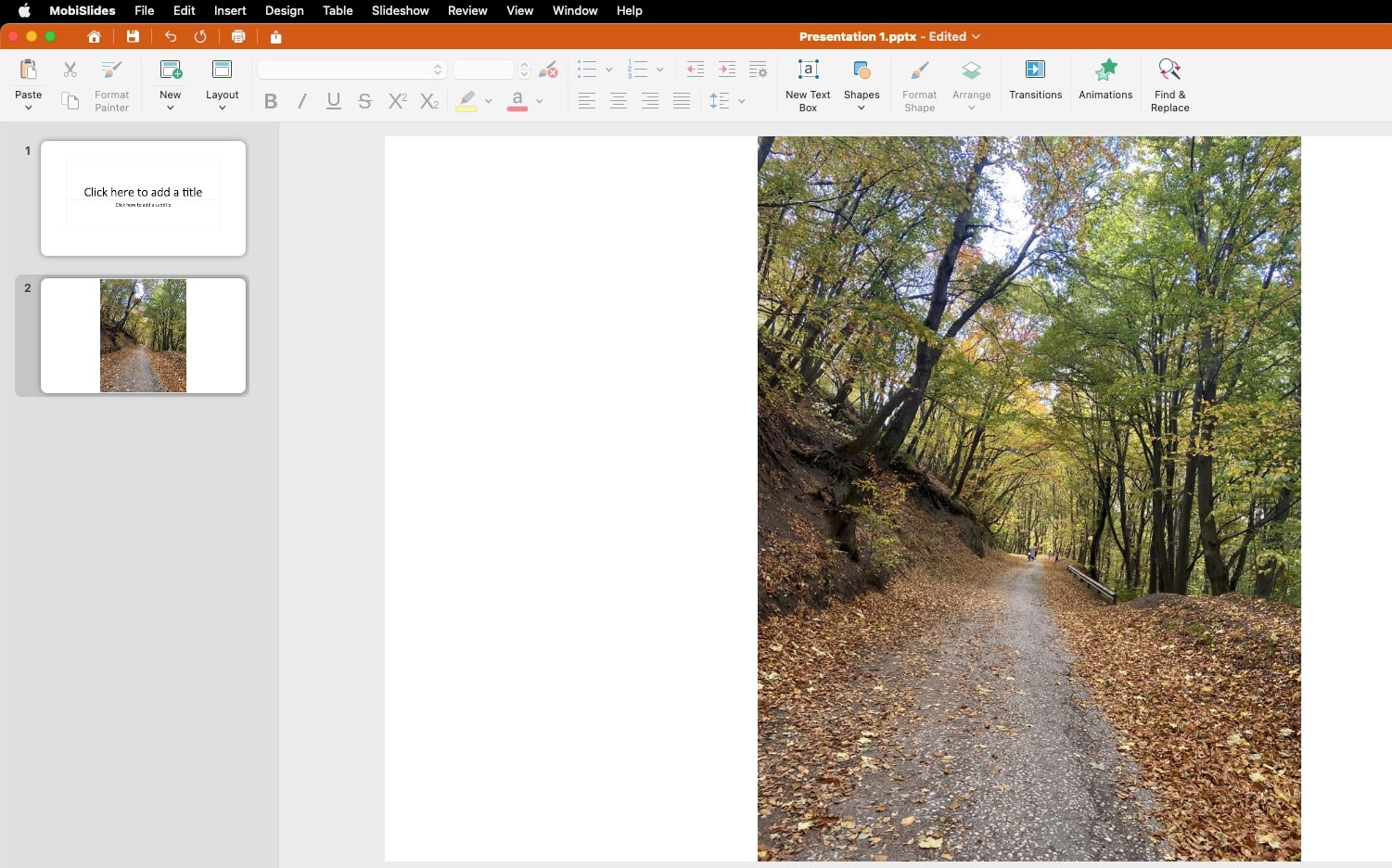PowerPoint has been the go-to tool for presentations for decades, but is it always the best choice?
When was the last time you sat through a really bad and boring presentation?
Slide after slide packed with tiny text, walls of numbers, and paragraphs that could have been emails.
The speaker drones on, basically reading off the screen, and you find yourself zoning out, fighting the urge to check your phone.
Now, flip the perspective – what about your last presentation?
Are you just another culprit in the long line of PowerPoint-powered snooze-fests?
Because here’s the thing: the world doesn’t need another bullet-point-heavy, lifeless slide deck.
Well, at least your audience doesn’t want one (psst: you don’t have to deliver one, either.)
So, instead of relying on PowerPoint as a crutch, imagine using dynamic, interactive, and more engaging formats to bring your message to life.
In this article, we’ll explore six ways to present without PowerPoint. These creative presentation ideas will help you capture the audience's attention, drive home your key points, and leave a lasting impression – all without a single slide in sight.
How to start a presentation
So here you are, staring at the blank slides in your PowerPoint presentation software for hours on end, having no idea how you'll pull this one off.
If this sounds anything like you, we suggest stepping away from the screen and rethinking your approach!
Because a creative presentation is more than just slides. It’s your stage, and you are the leading actor (or actress). So, before you even think about slides (or skipping them altogether), work on building your foundation first.
Imagine your creative presentation idea before you create it
Close your eyes. Picture yourself on stage or in the meeting room.
How do you want your audience to feel? What moments will grab their attention?
Before touching a keyboard, sketch out ideas, brainstorm key messages, and mentally walk through the experience you want to create.
Master your timing
Wrapping up too soon might make you seem underprepared, while dragging on will test everyone’s patience.
Think of your PowerPoint presentation slides like a great movie – it should be just long enough to leave an impact, without unnecessary filler.
Know who is in the room
Would you tell a joke at a formal business presentation? Or use technical jargon in a casual team meeting?
The better you understand your audience, the more effectively you can keep them engaged.
Boil it down to the essentials
Imagine your audience could only walk away with three things from your talk – what would they be?
You can use the 10-20-30 formula (created by the marketing expert Guy Kawasaki):
10 key ideas;
20 minutes of presentation time;
30-point minimum font.
Make audiences feel something
Instead of dumping big data numbers on your unfortunate audience, turn your creative presentation idea into a story – something that makes people lean in, relate to, or laugh.
Would you remember an Excel spreadsheet about climate change, or a vivid story about a town losing its freshwater supply?
Emotion is the glue that makes ideas stick.
So far, so good. But how do you turn these principles into a truly engaging experience?
Method 1: Use interactive elements and/or whiteboards
Instead of clicking through static slides, use interactive elements to make your presentation feel like a two-way conversation rather than a monologue.
Flip charts
Flip charts allow you to break your presentation into steps, revealing key points one sheet at a time.
The physical act of flipping pages also adds momentum – something slides can’t replicate.
Live illustrations
Ever seen a speaker have their talk illustrated in real-time? It’s mesmerizing.
If you have the skills (or a talented colleague), consider visual note-taking during your presentation.
Whiteboards
Instead of showing pre-made slides, draw your ideas in real time.
Whether it’s sketching a quick diagram, mapping out a process, or jotting down audience contributions, a whiteboard keeps things dynamic and spontaneous.
Method 2: Use infographics, charts, etc.
Instead of bombarding your audience with text-heavy slides, use infographics, charts, and visual aids to bring clarity to your message.
Infographics
A well-designed infographic condenses pages of information into a single, digestible visual.
Whether it’s market trends, process breakdowns, or survey results, an infographic tells a story without overwhelming your audience.
Charts
Charts help your audience see patterns and comparisons at a glance.
A bar chart can demonstrate growth, a pie chart can highlight proportions, and a line graph can tell the story of change over time.

Illustrations and photos
A single, well-placed image can be more powerful than 100 bullet points.
Use photos and illustrations to trigger emotions, set the scene, or emphasize key ideas.

Want a simple way to make professional charts and infographics, or systematize your daily tasks without Excel? MobiSheets is a great tool for designing clean, customizable visuals that make your data pop.
Method 3: Use audio and/or video
Presentations are first and foremost about keeping the audience interested. Sound and motion create energy, emotion, and engagement in creative ways that slides never can.
Audio playback
Want to build suspense? Play a dramatic score before delivering your key point.
Need to lighten the mood? Use an upbeat tune to re-energize the room.
Whatever it is you're going for, just make sure you’re using royalty-free tracks or have the proper licensing to avoid potential complications down the road.
Video playback
Video content tends to creates a cinematic experience that static slides simply can’t match.
Want to add that movie magic to your presentation? Use video to:
Demonstrate a product or concept. A behind-the-scenes look or a step-by-step demo makes complex ideas infinitely more digestible.
Showcase testimonials. A short clip of real people sharing their experiences instantly builds credibility and emotional connection.
Set the scene. A well-crafted intro video can transport your audience into the world of your topic, while a compelling closing clip can leave them with a lasting impression.
AI-generated videos
Forget stock footage – AI video tools can generate custom video content in minutes, no professional crew needed.
Virtual presenters - AI avatars can deliver part of your talk, making remote or multilingual presentations more engaging.
AI-generated animations - convert plain text into motion graphics that illustrate key points effortlessly.
Automatic subtitles and voiceovers - use AI to instantly generate captions and even translate voiceovers.
Real-time video personalization - some AI tools allow you to make videos tailored to specific audience segments, adjusting messaging on the fly.
Method 4: Use real-life props
Props are a secret weapon for presenters who want to break through the noise and make an impact.
Unlike slides, physical objects demand attention – they’re tangible, real, and engage the senses in a way screens never could.
Make your prop meaningful - if you’re presenting on marketing strategies, a chess piece might symbolize strategic thinking. Presenting on decision-making? A compass can symbolize navigating through choices.
Keep it simple - a tangled pair of headphones works to demonstrate frustration with disorganization, while an unsharpened pencil can symbolize lack of preparation. If the prop needs too much explanation, it’s working against you.
Build interaction - if you're presenting on ergonomic office tools, let someone test a posture-correcting chair. If discussing food marketing, have the audience taste-test two different snacks and compare their experiences. The more they interact, the more memorable your message becomes.
Create surprise - instead of starting with a list of statistics, reveal a physical object at the right moment to make your point. Talking about first impressions? Pull out a crumpled business card versus a pristine one. Discussing stress in the workplace? Drop a heavy backpack onto a table to symbolize the mental load.
Consider visibility - if you’re using small props, scale up or find a way to make them visible. A small key might represent unlocking opportunities, but unless everyone can see it, the impact is lost. If your audience can’t clearly see what you’re holding, they’ll lose interest fast.
Method 5: Incorporate Storytelling and Personal Anecdotes
We’ve already touched on narratives in previous sections because, let’s face it, stories are what we remember. A great story turns abstracts into something real, emotional, and relatable.
But how do you tell a compelling story in a presentation?
Start with a hook - grab attention immediately. Instead of stating, "Today, I’ll talk about resilience," say, "In 2018, I lost my job, missed my rent deadline, and had to move back in with my parents - all in the same month." Now they’re listening.
Make it personal (but not self-indulgent) - share real moments of failure, struggle, or success. Authenticity resonates. If it feels like a highlight reel, people will tune out.
Use vivid details - paint a picture. "I had a bad morning" is forgettable. "I spilled coffee on my white shirt, missed the bus, and walked into my meeting sweating" sticks.
Tie it back to your message - a great story needs a purpose. If talking about innovation, talk about a time when creativity solved a problem.
Engage the audience - stories aren’t monologues. Ask, “Has this happened to you?” or let everyone predict the ending before you reveal it.
Method 6: Ask the audience
The quickest way to lose interest? Talk for 30 minutes straight.
Instead, flip the script – make your listeners part of the experience.
Invite personal experiences - instead of just sharing your insights, ask everyone to contribute theirs. Try, “Can anyone think of a time when…?” or “Who here has faced this challenge before?”
Facilitate small group brainstorms - give the audience a question or scenario and let them brainstorm solutions together, whether it’s coming up with new product ideas, troubleshooting a business problem, or sharing best practices.
Create a live challenge - instead of a standard poll or quiz, set up an interactive challenge. Ask them to pitch an idea in 60 seconds, rearrange scrambled concepts into a logical sequence, or guess the outcome of a case study.
Get hands-on with creative tasks - if you’re leading a workshop or strategy session, give participants materials to sketch, build, or physically map out ideas, whether it’s drawing a notion, constructing a quick prototype, or writing key takeaways on sticky notes.
Crowdsource the presentation itself - turn passive listeners into active co-creators. Have them write questions or discussion points on a shared digital board, contribute one-word reactions in real-time, or let volunteers summarize key takeaways.
Frequently asked questions
What is a presentation?
A presentation is any situation where you speak to an audience – whether it’s a formal speech, a business pitch, a classroom discussion, or even a casual team update.
If you’re sharing information out loud, you’re presenting.
Do you need slides for a presentation?
No. Some of the best speakers (think TED) never use slides.
If visuals add value – like photos or key data – include them, but don’t rely on them to carry your presentation.
Can you turn your phone into a projector?
Yes, with a simple DIY trick.
Use a magnifying glass, a cardboard box, and your smartphone.
Cut a hole for the lens, place your phone inside, and adjust for focus.
It’s not high-tech, but it works in a pinch!
Final thoughts
Presenting without PowerPoint doesn’t mean sacrificing clarity or impact – often it could mean quite the opposite.
So, whether you use props, storytelling, whiteboards, or videos, the key is to engage your audience in a way that feels natural and memorable.
And the best part? These methods aren’t a one-size-fits-all – you can mix and match them to fit your style and message like hand in glove.
Of course, sometimes all you need to get the job done is an old-fashioned slides presentation, but there will be times where you'll be given an opportunity to step outside the box. When that happens, revisit this article to help you drive your point across in a memorable way.
Still looking for a presentation software that isn't as complex? Try MobiSlides – an intuitive and affordable alternative to PowerPoint – and get ready to turn some heads.




